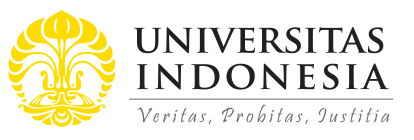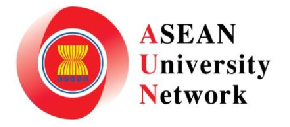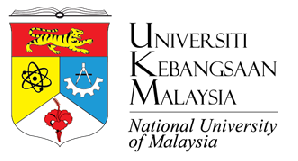
Abstract
Indonesia is experiencing a double burden of malnutrition,especially in young children. Many studies show that community empowerment andnutrition education are effective at reducing the risk of malnutrition whencombined with attractive tools and appropriate nutrition and parenting messages.Therefore, we developed innovative picture storybooks as a fun learning tool to equipteachers and parents with a way to improve their understanding and awareness ofthe quality of early childhood dietary habits and social behavior. The studyconsisted of three stages, including formative research, book development, andevaluation. Our formative research triangulated information on preferences andkey messages on food, nutrition, parenting, and child characteristics throughfocus group discussions (FGDs), in-depth interviews (IDIs), and observations of school foodenvironments. The FGDs were held for the children (n=6), teachers (n=6), andmothers (n=6). The IDIsexplored opinions from a story teller, a nutritionist, a communication expert,a child psychologist, and an illustrator team. Finally, books were developed bythe researcher and evaluated by the expert team (n=10) and teachers (n=8). Thestudy took place in early childhood education centers and kindergartens inCentral Jakarta’s urban areas. Children preferred picture storybooks that represented a unique conditionof magical power and provided characters from the fantasy genre. Following theIDI’srecommendations and observations, three picture storybook series were developed: healthysnacking, integrated with messages to stimulate a child’s disciplined behavior;eating vegetables, especially green ones, with the motivation to increasetruthfulness; and a healthy eating portion guide with a variety of foodscombined with messages to motivate grateful attitudes. The book contentintegrated key messages on nutrition, parenting, and social behavior withunique characters and colorful pictures. The expert team recommended theappropriate development of the picture storybooks and emphasized paying attention to cleargenres, text structure, content, themes and ideas, language, vocabulary,illustrations and graphic design, and messages delivered. The picture storybookspresent key messages on nutrition, parenting, and child behavior using anattractive, colorful and unique appearance. These books can be used to teachearly childhood nutrition and parenting intervention by integrating them withother approaches such as story-telling, eating meals together, and othersupporting activities.
References
Almerico, G. M. 2014. Building character through literacy with children’s literature. Research in Higher Education Journal, 26, 1-13.
Amresh, A., Sinha, M., Birr, R. & Salla, R. 2015. Interactive Cause and Effect Comic-book Storytelling for Improving Nutrition Outcomes in Children. Proceedings of the 5th International Conference on Digital Health 2015 - DH '15.
Baker, K. M., Sonnenschein, S., Serpell, R. 2001. Parents’ Interactions with Their First-Grade Children During Storybook Reading and Relations with Subsequent Home Reading Activity and Reading Achievement. Journal of School Psychology, 39 no 5, 415-438.
Berns, Roberta M. 2010. Child, Family, School, Community: Socialization and Support. 8th Edition. Belmont. Wadsworth, Cengage Learning. Bhutta, Z. A., Salam, R. A. & Das, J. K. 2013. Meeting the challenges of micronutrient malnutrition in the developing world. Br Med Bull, 106, 7-17.
Bohlin, K.D., Farmer, & Ryan, K. 2001. Building character in schools resource guide. San Francisco, CA: Jossey-Bass. Capacci, S., Mazzocchi, M., Shankar, B., Macias, J. B., Verbeke, W., Perez-Cueto, F. J., Koziol-Kozakowska, A., Piorecka, B., Niedzwiedzka, B., D'addesa, D., Saba, A., Turrini, A., Aschemann-Witzel, J., Bech-Larsen, T., Strand, M., Smillie, L., Wills, J. & Traill, W. B. 2012. Policies to promote healthy eating in Europe: a structured review of policies and their effectiveness. Nutr Rev, 70, 188-200.
Cruz, L. M. G., Azpeitia, G. G., Suarez, D. R., Rodriguez, A. S., Ferrer, J. F. L. & Serra-Majem, L. 2017. Factors Associated with Stunting among Children Aged 0 to 59 Months from the Central Region of Mozambique. Nutrients, 9.
De Onis, M. & Branca, F. 2016. Childhood stunting: a global perspective. Matern Child Nutr, 12 Suppl 1, 12-26.
Deboer, M. D. 2013. Obesity, systemic inflammation, and increased risk for cardiovascular disease and diabetes among adolescents: a need for screening tools to target interventions. Nutrition, 29, 379-86.
Dev, D.A., Byrd-Williams, C., Ramsay, R., McBride, B., Srivastava, D., Murriel, A., Arcan, C., and Adachi-Mejia, A.M. 2017. Engaging Parents to Promote Children’s Nutrition and Health: Providers’ Barriers and Strategies in Head Start and Child Care Centers. American Journal of Health Promotion, 31(2), 153-162.
Donna Winham, S. S. Q., Tamara Underiner, Stephani Woodson, And Megan Todd. 2013. Nutrition education integrates culture via storytelling in cooking workshop for community nutritionists.
Durlak, J. A., Weissberg, R. P., Dymnicki, A. B., Taylor, R. D. & Schellinger, K. B. 2011, The Impact of Enhancing Students’ Social and Emotional Learning: A Meta-Analysis of School-Based Universal Interventions. Child Development, 82. 405–432.
Edwards, C. A., Xie, C. & Garcia, A. L. 2015. Dietary fibre and health in children and adolescents. Proc Nutr Soc, 74, 292-302.
El Kishawi, R. R., Soo, K. L., Abed, Y. A. & Wan Muda, W. A. 2016. Prevalence and Associated Factors for Dual Form of Malnutrition in Mother-Child Pairs at the Same Household in the Gaza Strip-Palestine. PLoS One, 11, e0151494.
Evans, C. E., Christian, M. S., Cleghorn, C. L., Greenwood, D. C. & Cade, J. E. 2012. Systematic review and meta-analysis of school-based interventions to improve daily fruit and vegetable intake in children aged 5 to 12 y. Am J Clin Nutr, 96, 889-901.
Gall, M., Gall, J., and Borg, W. 2007. Educational research: An introduction, 8th Edition. New York and London: Longman.
Guerrant, R. L., Deboer, M. D., Moore, S. R., Scharf, R. J. & Lima, A. A. 2013. The impoverished gut--a triple burden of diarrhoea, stunting and chronic disease. Nat Rev Gastroenterol Hepatol, 10, 220-9.
Haigh, C. & Hardy, P. 2011. Tell me a story--a conceptual exploration of storytelling in healthcare education. Nurse Educ Today, 31, 408-11.
Hanandita, W. & Tampubolon, G. 2015. The double burden of malnutrition in Indonesia: Social determinants and geographical variations. SSM Popul Health, 1, 16-25.
Hasni, F. Y. & Fajri, I. N. 2018. The combination of storybook and children’s activity: “The seven basic principles of a clean and healthy lifestyle". IOP Conference Series: Materials Science and Engineering, 453.
Heaton, B., Gebel, C., Crawford, A., Barker, J. C., Henshaw, M., Garcia, R. I., Riedy, C. & Wimsatt, M. A. 2018. Using Storytelling to Address Oral Health Knowledge in American Indian and Alaska Native Communities. Prev Chronic Dis, 15, E63.
Inayati, D. A., Purwesti, R. C., Wirawan, N. N., Suryantan, J., Hartono, S., Bloem, M. A., Pangaribuan, R. V., Biesalski, H. K., Hoffmann, V., Bellows, A. C. 2012. Improved nutrition knowledge and practice through intensive nutrition education: A study among caregivers of mildly wasted children on Nias Island, Indonesia. Food and Nutrition Bulletin, vol. 33, no. 2, 117-127.
Kelemen, D., Emmons, N. A., Seston Schillaci, R. & Ganea, P. A. 2014. Young children can be taught basic natural selection using a picture-storybook intervention. Psychol Sci, 25, 893-902.
Mahmudiono, T., Nindya, T. S., Andrias, D. R., Megatsari, H. & Rosenkranz, R. R. 2016. The effectiveness of nutrition education for overweight/obese mothers with stunted children (NEO-MOM) in reducing the double burden of malnutrition in Indonesia: study protocol for a randomized controlled trial. BMC Public Health, 16, 486.
Ministry of Health Republic of Indonesia. 2007. Report on national basic health research (RISKESDAS). Jakarta: The National Institute of Health Research and Development (NIHRD).
Ministry of Health Republic of Indonesia. 2013. Report on national basic health research (RISKESDAS). Jakarta: The National Institute of Health Research and Development (NIHRD).
Office, T. W. B. 2013. The double burden of malnutrition in Indonesia.
Rachmi, C. N., Agho, K. E., Li, M. & Baur, L. A. 2016. Stunting, Underweight and Overweight in Children Aged 2.0-4.9 Years in Indonesia: Prevalence Trends and Associated Risk Factors. PLoS One, 11, e0154756.
Sekiyama, M., Jiang, H. W., Gunawan, B., Dewanti, L., Honda, R., Shimizu-Furusawa, H., Abdoellah, O. S. & Watanabe, C. 2015. Double Burden of Malnutrition in Rural West Java: Household-Level Analysis for Father-Child and Mother-Child Pairs and the Association with Dietary Intake. Nutrients, 7, 8376-91.
Vasan, S. K., Roy, A., Samuel, V. T., Antonisamy, B., Bhargava, S. K., Alex, A. G., Singh, B., Osmond, C., Geethanjali, F. S., Karpe, F., Sachdev, H., Agrawal, K., Ramakrishnan, L., Tandon, N., Thomas, N., Premkumar, P. S., Asaithambi, P., Princy, S. F. X., Sinha, S., Paul, T. V., Prabhakaran, D. & Fall, C. H. D. 2018. IndEcho study: cohort study investigating birth size, childhood growth and young adult cardiovascular risk factors as predictors of midlife myocardial structure and function in South Asians. BMJ Open, 8, e019675.
WHO. 2019. Track 1: Community empowerment. 7th Global Conference on Health Promotion: Track themes. Accessed from https://www.who.int/healthpromotion/conferences/7gchp/track1/en/
Zeba, A. N., Delisle, H. F. & Renier, G. 2014. Dietary patterns and physical inactivity, two contributing factors to the double burden of malnutrition among adults in Burkina Faso, West Africa. J Nutr Sci, 3, e50.
Recommended Citation
Agustina, Rina; Sari, Okky Lupita; Sholihah, Lini Anisfatus; Rizqi, Nov; Octavia, Lestari; Pramesthi, Indriya Laras; Prafiantini, Erfi; and Kardha, Putu Chandra Dewi
(2018).
Development of innovative picture storybooks to empower parents and teachers for early childhood education in nutrition and social-behavior in Jakarta.
ASEAN Journal of Community Engagement, 2(2).
Available at: https://doi.org/10.7454/ajce.v2i2.128








